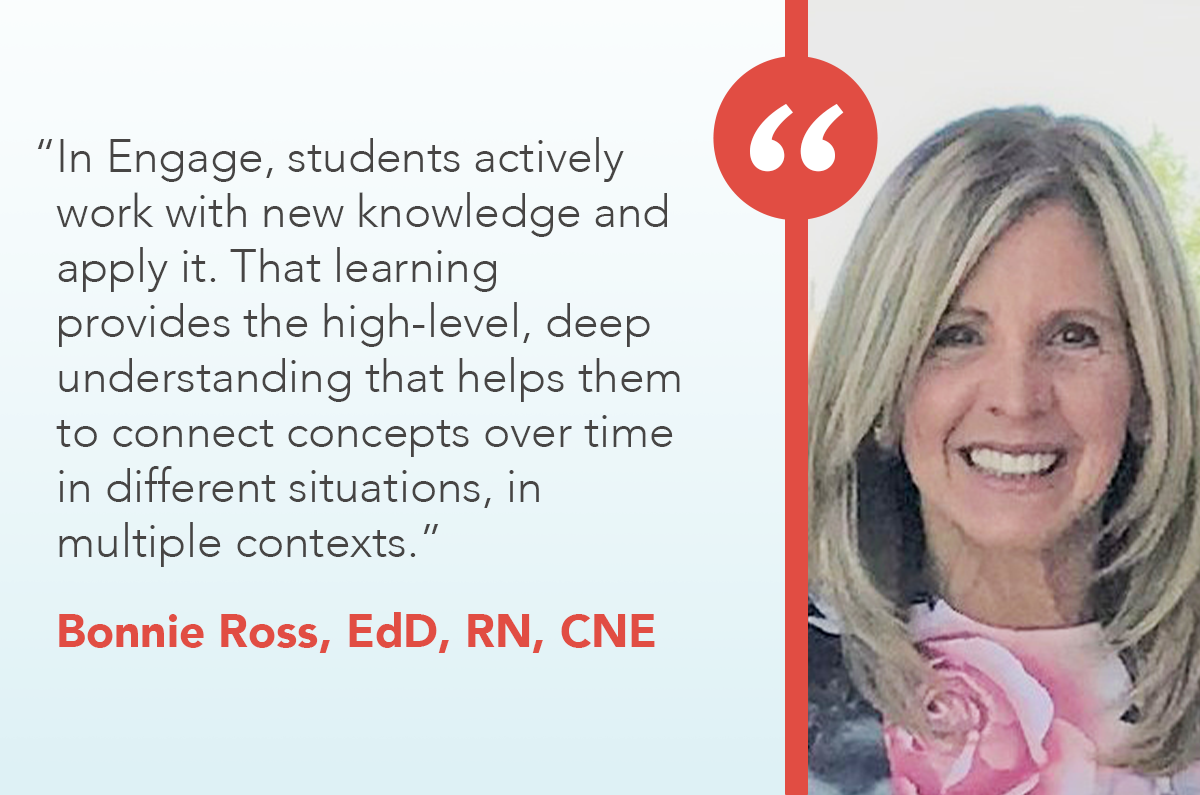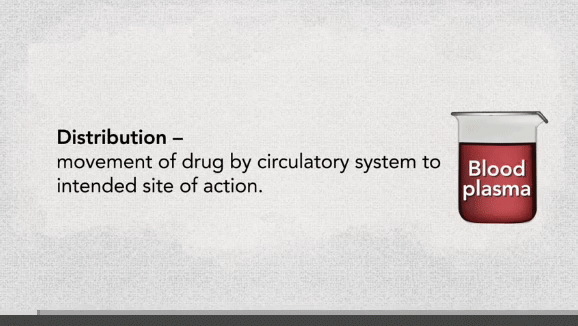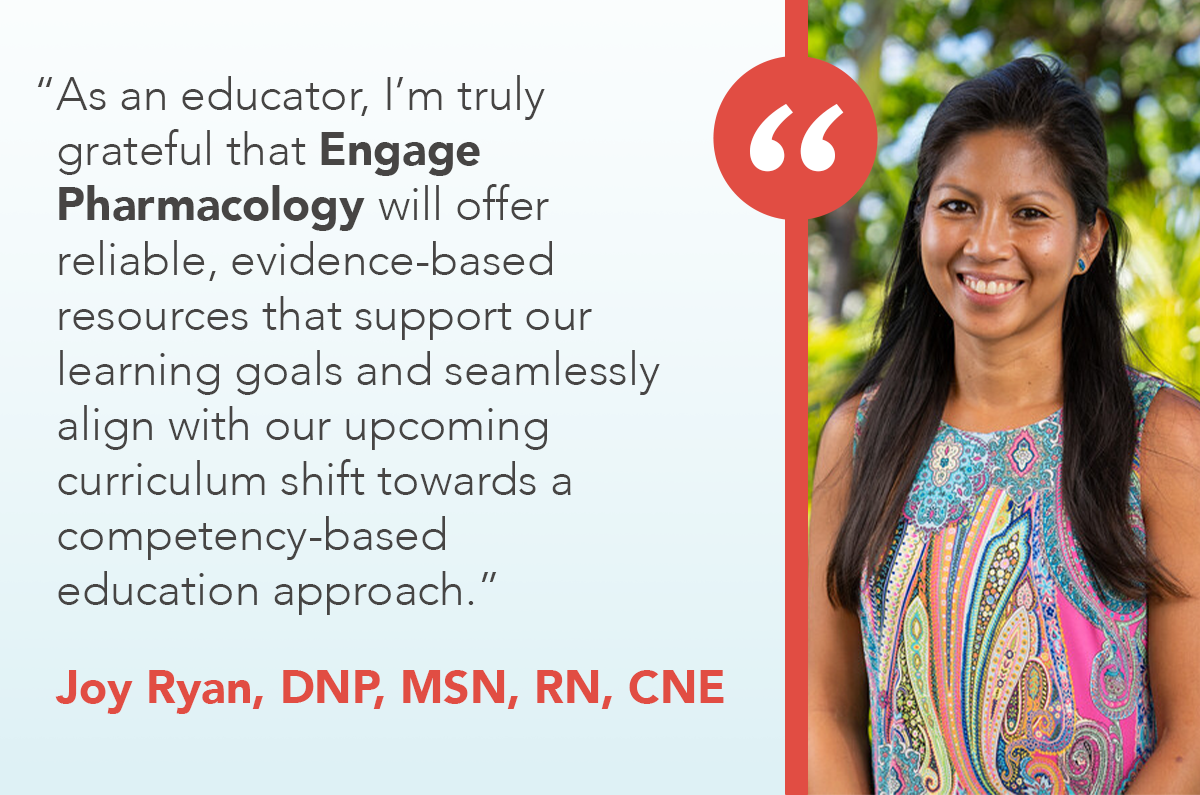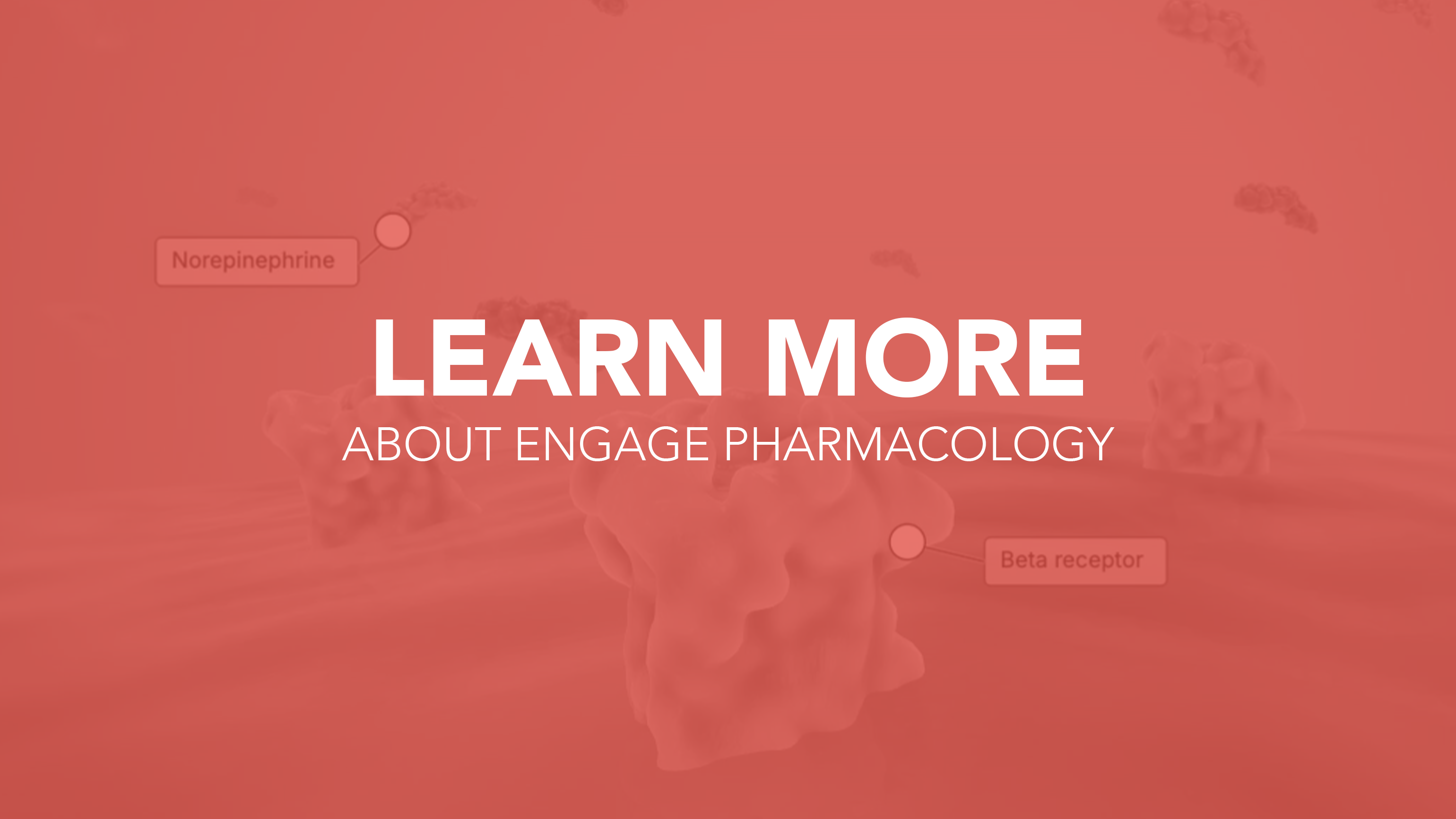Simplifying Pharmacology for Nursing Students: Moving From Confusion to Confidence
Using Active Learning Resources to Make Complex Concepts Click
Pharmacology is a foundational element in a nursing curriculum — and one of its most formidable challenges. For students, it’s a dense and abstract subject area. For educators, it requires a balancing act between delivering complex content and keeping students engaged with the material.
What if students could learn pharmacology more easily — and even enjoy it?
This article explores the most common challenges in teaching pharmacology and outlines strategies for overcoming them. It also reports a new way to provide active, student-centered learning that simplifies pharmacology for both students and educators.
Common Challenges in Teaching and Learning Pharmacology
Pharmacology is a cognitively demanding subject that requires learning and understanding vast amounts of information and complex concepts. Programs commonly place the course early in a nursing curriculum, which means many students are trying to build knowledge in other complex subjects — as well as study skills — at the same time
“Teaching and learning pharmacology is a great challenge because it requires students to integrate knowledge from anatomy, physiology, pathophysiology, microbiology and chemistry,” said Joy Ryan, DNP, MSN, RN, CNE, an assistant professor in the School of Nursing and Health Professions at Chaminade University of Honolulu. “We know that these students are still developing their foundational skills and might find some concepts a bit tricky at first, which is completely normal.”
In addition to complexity, the amount of information in a pharmacology class can be intimidating.
“The sheer volume of medications students need to learn also makes this class difficult,” said Japonica Morris, EdD, MSN, RN, an integration specialist nurse educator for ATI.
Simplify Pharmacology Teaching With Engage® Pharmacology
Given the dueling features of complexity and volume, it’s no surprise when students describe pharmacology as overwhelming. Learning drug names, mechanisms of action, side effects, and interactions can feel like learning a new language. Students may rely on rote memorization to get by — a practice that doesn’t support long-term learning or clinical judgment.
Educators, meanwhile, face their own hurdles. Many report that students aren’t prepared for the pharmacology content, are disengaged, or are unable to connect textbook content to real-world practice. In addition, research shows that faculty often lack the time and resources to create engaging, multimodal learning experiences.1 As a result, they often default to traditional lectures and static textbooks, which don’t adequately engage many of today’s students.1
These challenges are compounded by the diversity of learning styles in today’s classrooms. Neurodiverse students in particular may struggle with learning materials that don’t accommodate their cognitive strengths.2-4
As Clouder et. al.2 observed, although support services for neurodiverse students may be available, “a mismatch often exists between the linear, text-heavy nature of academic materials and the cognitive preferences of neurodiverse learners, such as those with dyslexia, ADHD, or autism.”
Zastudil4 also researched the learning styles of neurodiverse students and found that they often face barriers when instruction is “overly reliant on sequential, text-based formats.” Multimodal and flexible approaches are better suited to these learners, Zastudil concluded.4
Strategies to Help Faculty Teach Pharmacology
Ingenuity and problem solving are common traits in nurses — and they’re not forgotten when RNs move from the bedside into the classroom. From flipped classrooms to role playing, nurse educators commonly incorporate a variety of teaching strategies. But getting creative with a subject as dry as pharmacology tends to be more difficult.
One strategy is to organize the teaching of pharmacology content according to drug category. Dr. Morris noted that since the suffixes for many medication classes are similar, students tend to have an easier time learning them.
“There are some exceptions to that of course, but if you start there, it can be an easier way for students to learn and a straightforward teaching strategy for educators as well,” she said.
But things get more complicated when it comes to understanding how medications affect body systems and disease conditions.
“A student doesn’t really understand the cardiovascular system at this point,” Dr. Morris said. “Hypertension might be pretty simple, but something like congestive heart failure is not. So when they learn that ACE inhibitors are also used for congestive heart failure, that’s a much more complex learning process.”
That’s when humanizing the content can be useful. Bonnie Ross, EdD, RN, CNE, a nurse educator who has consulted with many academic programs and currently serves as a product content specialist for ATI Nursing Education, said pharmacology is a static topic that benefits from real-life applications in teaching.
“A helpful strategy is for faculty to create case scenarios based on experiences at the bedside and then apply that to the pharmacology content. This brings the patient into pharmacology to help students understand what it looks like in actual practice,” Dr. Ross said.
Dr. Morris and Dr. Ross both noted that teaching pharmacology can be especially challenging for new instructors. It’s a major reason that they may rely on traditional textbooks for pharmacology classes.
“For a new instructor, it can seem easier to just follow the textbook,” Dr. Morris said. “But will following the outline of a chapter and reading from PowerPoint slides help students put 2 and 2 together? Will it help them critically think? I’d say the answer is no.”
Making Pharmacology Instruction Engaging, Active and Student-Centered
With these challenges in mind, ATI Nursing Education developed a solution that meets pharmacology teaching and learning needs in ways that incorporate interactive learning strategies and focus on the key information students need to know. Engage® Pharmacology is an innovative digital teaching and learning solution that reimagines how educators teach pharmacology and how students learn it. It makes learning about medications simpler, more interactive and more effective.

Engage Pharmacology is 100% interactive and evidence-based. It provides more than 50 learning modules, including clinical judgment and medication administration, pharmacokinetics and pharmacodynamics, and modules by individual class and treatment category (e.g., antimicrobials, cardiovascular system, etc.).
The features within these learning modules encompass:
- 25+ virtual simulations of pharmacology scenarios
- 25+ client charting activities
- 20+ skills activities
- 50+ 3D visualizations
- 50+ podcasts for auditory learners and on-the-go study
- 50+ videos and 900+ illustrations and GIFs to support visual learning
- 500+ embedded questions for continuous practice and self-assessment
- client education activities that build therapeutic communication skills.


The GIFs above and at left provide only a glimpse of the many ways Engage Pharmacology captures students' attention.
The variety of content supports active learning and accommodates multiple learning styles — an approach that is well supported by research.
Studies show that multimodal, interactive learning significantly improves student engagement and knowledge retention in pharmacology courses and other nursing courses.5-9 Specifically, this body of research contains evidence that textbook alternatives are effective.6,7,10
The active learning strategies provided in Engage Pharmacology (and other solutions in the Engage Series) teach students more effectively because they lead students to demonstrate understanding, not what they may have memorized.
“In Engage, students actively work with new knowledge and apply it,” Dr. Ross said.
“That learning provides the high-level, deep understanding that helps them to connect concepts over time in different situations, in multiple contexts.”
Empowering Educators with Data-Driven Insights in Engage
Another important feature of Engage Pharmacology is its data-driven insights for faculty. Educators receive robust reporting tools that provide:
- a single view of student module activity and test results
- group performance metrics on key learning objectives
- insights into which concepts are sticking—and which aren’t.
This level of visibility allows educators to identify struggling students early and tailor remediation efforts accordingly. It also supports data-informed instruction — a technique that is increasingly important in competency-based education.
Studies show that real-time analytics and feedback loops are essential for improving both teaching strategies and student outcomes.

Educator resources for Engage Pharmacology include:
- lesson plans
- PowerPoint slides
- clinical judgment case studies with concept maps
- discussion and reflection questions
- test banks with NCLEX items.
“As educators, we don't want to just wait for a test to identify the gaps in students’ knowledge,” Dr. Ross said.
"The reporting in Engage provides ongoing data that allow faculty to clearly see what's working and what's not working. They can give more feedback and set students up with the tools to be successful."
A Textbook Replacement That Meets Comprehensive Needs
Unlike many digital tools that supplement textbooks, Engage Pharmacology is designed to replace them entirely. It’s streamlined, updatable, and focused on need-to-know content — a welcome change from dense books that cannot interact with learners and aren’t printed as quickly as evidence and practice standards change.
Faculty members who participated in piloting for Engage Pharmacology expressed excitement and gratitude for this addition to the Engage Series. Specific comments included:
- “As someone who struggles more with [teaching] pharmacology, this module breaks it down into a simpler, easier format to navigate.”
- “There are some great enhancements — especially videos, illustrations, simulations, and other interactive learning activities. These help tremendously with learning complex content and make the learning process more fun!”
- “I would love to replace my textbook with this!”
These comments reflect the broader shift in nursing education toward active, student-centered learning. As Hood and Khan11 noted in their text Understanding Pharmacology in Nursing Practice, “The future of pharmacology education lies in contextual, applied, and technology-enhanced learning environments.”
Dr. Ryan, of Chaminade University, is another educator who is welcoming the release of Engage Pharmacology.
“I am most excited about the real-world patient case scenarios that encourage critical thinking and clinical decision-making, preparing our students for actual nursing practice. I am also looking forward to the reduced time spent creating materials and allowing more focus on student engagement and remediation.”
Noting that the simulations in Engage Pharmacology are “engaging and fun for students,” she also praised the case studies, quizzes, and gamified activities and said they will help students understand and apply concepts rather than simply memorizing them.
“As an educator, I’m truly grateful that Engage Pharmacology will offer reliable, evidence-based resources that support our learning goals and seamlessly align with our upcoming curriculum shift toward a competency-based education approach,” Dr. Ryan said.
The Engage Series: A Broader Vision for Nursing Education
Engage Pharmacology is part of the Engage Series, ATI’s suite of interactive learning solutions designed to complement or replace textbooks. The other solutions in this series are:
- Engage Adult Medical Surgical
- Engage Community & Public Health
- Engage Fundamentals
- Engage Maternal, Newborn and Women’s Health
- Engage Mental Health
- Engage Nursing Concepts (winter 2025)
- Engage Pediatrics.
Together, these features streamline preparation, enhance instruction, and support better outcomes across the nursing curriculum.
A Shift Worth Making
Pharmacology doesn’t have to be a stumbling block in nursing education. With Engage Pharmacology, educators gain a powerful ally in the classroom and students gain a dynamic, supportive learning environment that meets them where they are.
As nursing programs continue to evolve, tools like Engage Pharmacology and the Engage Series represent the future of education — interactive, personalized, and built for success.
“This is a completely new way of thinking and learning about pharmacology,” Dr. Ross said. “Engage offers a transformative approach to teaching because it helps us meet the students exactly where they are and adapts to many learning styles. If I were still teaching, I’d be ecstatic to have this.”
References
- Andrews LB, Barta L. Simulation as a tool to illustrate clinical pharmacology concepts to healthcare program learners. Current Pharmacology Reports. 2020;6:182-191. https://doi.org/10.1007/s40495-020-00221-w
- Clouder L, Karakus M, Cinotti A, Ferreyra MV, Fierros GA, Rojo P. Neurodiversity in higher education: a narrative synthesis. Higher Education. 2020;80:757-778. DOI: https://doi.org/10.1007/s10734-020-00513-6
- Lierman A. The Struggle You Can’t See: Experiences of Neurodivergent and Invisibly Disabled Students in Higher Education. (2024, Open Book Publishers).
- Zastudil C, Smith DH, Tohamy Y, Nasimova R, Montross G, MacNeil S. Neurodiversity in Computing Education Research: A Systematic Literature Review. Proceedings of the 30th ACM Conference on Innovation and Technology in Computer Science Education. 2024. https://doi.org/10.1145/3724363.3729088
- Hintze T, Godreau A, Kunkler K, Athauda G, Diptiman B. Use of simulation to teach pharmacology to healthcare professionals: A systematic review. The Journal of Pharmacology and Experimental Therapeutics. 2025;392(3):102497. DOI: https://doi.org/10.1016/j.jpet.2024.102497
- Phillips, BC, Johnson J, Khalid N, Zapparrata N, Albright G. Benefits of an online interactive educational program over traditional textbooks. Nurse Educator. 2023. DOI: 10.1097/NNE.0000000000001398
- Lee CY, Miller C, Bone E, Kusljic S. Connecting nursing cohorts in authentic learning activities through redesigned pharmacology curriculum. Teaching and Learning in Nursing. 2024. https://doi.org/10.1016/j.teln.2024.10.021
- Crowley FC, Restini C, Burke K, Rieder MJ. Exploring the landscape of pharmacology education in health professions programs: From historical perspectives to current approaches to teaching. European Journal of Pharmacology. 2025. https://doi.org/10.1016/j.ejphar.2025.177386
- Rachul C, Varpio L. More than words: how multimodal analysis can inform health professions education. Advances in Health Sciences Education. 2020;25:1087-1097. https://doi.org/10.1007/s10459-020-10008-9
- D’Anna B, Boyd B, Levitt C. (2023). Replace Traditional Textbooks with Technology Resources Through Trebian’s Model. University of Central Florida Center for Distributed Learning.
- Hood P, Khan E. (2020). Understanding Pharmacology in Nursing Practice. Springer Nature Link.

